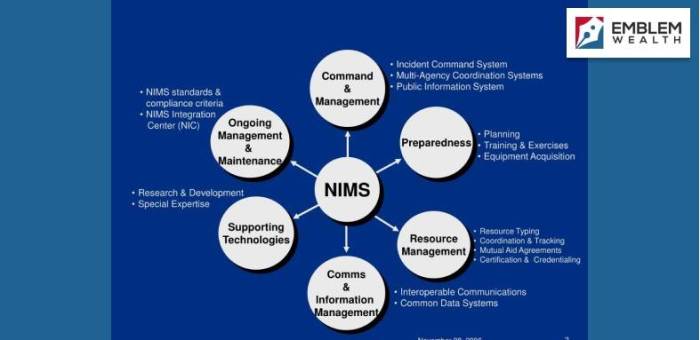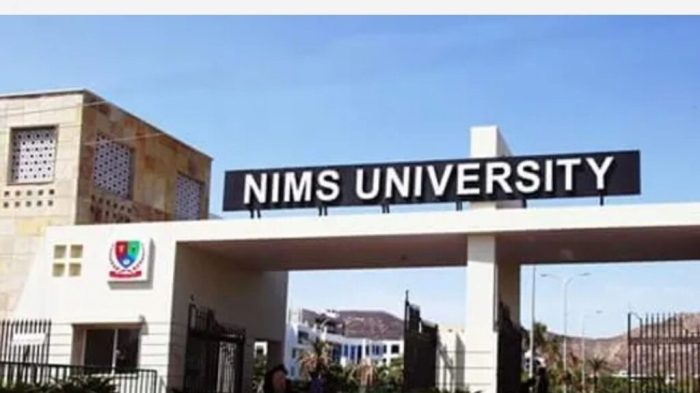Which nims management characteristic follows established – Established Core Values Guide NIMS Management, an in-depth exploration into the significance of core values in guiding decision-making and actions within the NIMS framework. This analysis delves into the purpose and benefits of implementing a unified structure, the process of developing a comprehensive incident action plan, and the role of standardized operating procedures in ensuring consistency and efficiency in incident response.
Furthermore, it highlights the importance of fostering interagency collaboration, conducting regular training and exercises, and monitoring and evaluating incident response to enhance preparedness and response capabilities. By examining these key characteristics, this discussion provides valuable insights into the effective implementation of NIMS management.
1. Establish Core Values

Establishing core values is fundamental in NIMS management as it provides a solid foundation for decision-making and actions within the framework. Core values serve as guiding principles that shape the organization’s culture and behavior during incident response.
Commonly adopted core values in NIMS organizations include integrity, teamwork, accountability, compassion, and excellence. These values guide all aspects of incident management, from planning and preparedness to response and recovery.
2. Implement a Unified Structure
A unified structure in NIMS management ensures a coordinated and effective response to incidents. It clearly defines roles and responsibilities within the organization, facilitating seamless communication and collaboration.
Key personnel within the unified structure include the Incident Commander, Operations Section Chief, Planning Section Chief, Logistics Section Chief, and Finance/Administration Section Chief. Each role has specific responsibilities and authorities to ensure efficient incident management.
3. Develop a Comprehensive Incident Action Plan

The Incident Action Plan (IAP) is a critical document that guides incident response and Artikels the objectives, strategies, and resources required for effective management. It serves as a roadmap for all personnel involved in the incident.
The IAP includes components such as the incident objectives, operational period, resources assigned, and safety considerations. Developing a comprehensive IAP ensures a coordinated and efficient response to the incident.
4. Utilize Standardized Operating Procedures

Standardized Operating Procedures (SOPs) are essential in NIMS management as they provide consistent and efficient guidelines for incident response. They Artikel step-by-step instructions for specific tasks and situations.
Common SOPs used in NIMS organizations include those for incident command, communication, evacuation, and hazardous materials handling. By adhering to SOPs, personnel can ensure a standardized and effective response to incidents.
5. Foster Interagency Collaboration

Interagency collaboration is crucial in NIMS management as it allows multiple agencies to work together effectively during incidents. It involves building and maintaining partnerships with other agencies to share resources, expertise, and information.
Strategies for fostering interagency collaboration include joint training exercises, cross-agency planning, and establishing mutual aid agreements. By collaborating effectively, agencies can enhance their collective response capabilities.
6. Conduct Regular Training and Exercises: Which Nims Management Characteristic Follows Established
Regular training and exercises are essential for enhancing the preparedness and response capabilities of NIMS organizations. They provide personnel with opportunities to practice incident management skills, test procedures, and identify areas for improvement.
Best practices for training and exercises include scenario-based drills, table-top exercises, and full-scale exercises. These activities allow personnel to gain hands-on experience and refine their response strategies.
7. Monitor and Evaluate Incident Response
Monitoring and evaluating incident response is crucial for continuous improvement and effectiveness. It involves collecting and analyzing data to assess the performance of the NIMS framework and identify areas for enhancement.
Methods for monitoring and evaluation include performance metrics, after-action reports, and feedback from personnel involved in the incident. By evaluating incident response, organizations can identify areas for improvement and enhance their overall preparedness.
Question & Answer Hub
What is the significance of core values in NIMS management?
Core values serve as guiding principles that shape decision-making and actions within the NIMS framework, ensuring consistency and alignment among all stakeholders.
How does a unified structure benefit NIMS management?
A unified structure provides a clear chain of command, defines roles and responsibilities, and facilitates effective coordination and communication during incident response.
What is the purpose of an incident action plan in NIMS management?
An incident action plan Artikels the objectives, strategies, and tactics for managing an incident, providing a roadmap for coordinated and efficient response efforts.
How do standardized operating procedures contribute to NIMS management?
Standardized operating procedures ensure consistency and efficiency in incident response by providing clear guidelines for specific tasks and activities.
Why is interagency collaboration crucial in NIMS management?
Interagency collaboration fosters cooperation and coordination among multiple agencies, enhancing resource sharing, information exchange, and overall incident response effectiveness.